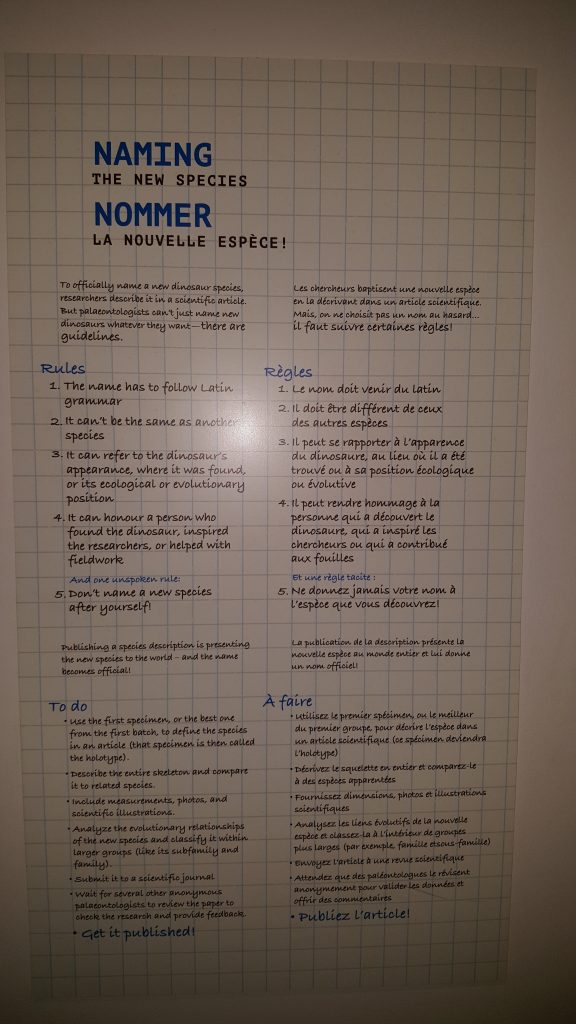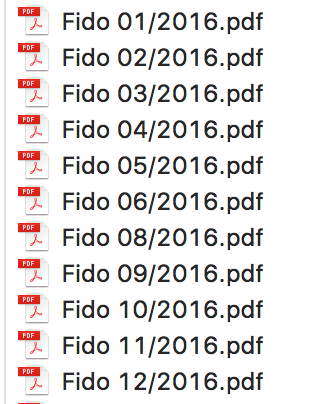Overt time I’ve realized the importance of using standardized naming conventions for documents and folders. Essentially, “standardized naming conventions” means using a set of rules to create names so they remain consistent and meaningful over time. It sounds like basic and easy practical advice to follow, but even I feel stumped by it sometimes. The rules I’ve created definitely help, especially when saving draft documents, or notes that contain more than one topic. It takes a few extra seconds to name a document properly, but saves me minutes (and hours) of time searching for it in the future.
Last year an exhibit at the Royal Ontario Museum featured a newly discovered dinosaur, plus the standardized naming convention rules for naming the new dinosaur species.

Why are good document names important?
They help us locate our documents quickly, with a high rate of success. Standardized document names are beneficial regardless if we prefer searching (i.e. entering keywords into the search box) or browsing (i.e. following a folder chain). And they’re incredibly useful when co-authoring, or sharing, documents.
Standardized naming will sort documents alphabetically, naturally grouping ones with similar titles. This is useful for keeping track of recurring documents, or drafts with versions (e.g. v1, v2).
What makes a document name good?
Good document names are descriptive of the content, have meaning, and are created consistently. Document titles such as “misc. stuff,” “notes Jan 17, 2017,” or “important to dos” quickly lose relevance and become ineffective for locating the document.
Consistency is critical. I use standardized naming for monthly bills to find them quickly and to see if I’m missing something. Here is an example of how I name monthly phone bills. Instantly, I can see July is missing.

How to create good document names?
- Develop standardized naming convention rules for your most commonly used documents.
- Structure document titles in a way that aids finding the documents. I tend to use the document type as the first part of my naming convention (e.g. Template + type of template (handout, expense form, report, etc.) or Vendor name + type of expense + date).
- Put the piece of information most important (meaningful) to you at the start of the document name. It could be the project name, the subject, the document type, the expense type, the vendor, the date, etc.
- Write the date according to ISO standard: yyyy-mm-dd (largest to smallest).
- Educate collaborators about the rules.
- Use them.

3 comments for “Document Naming Tips”